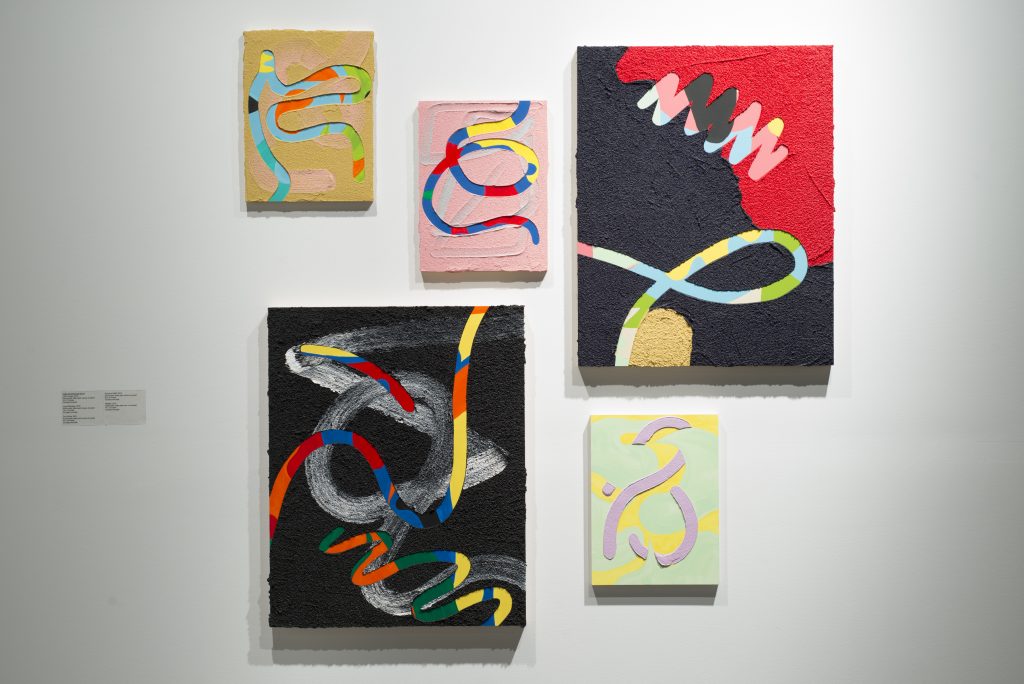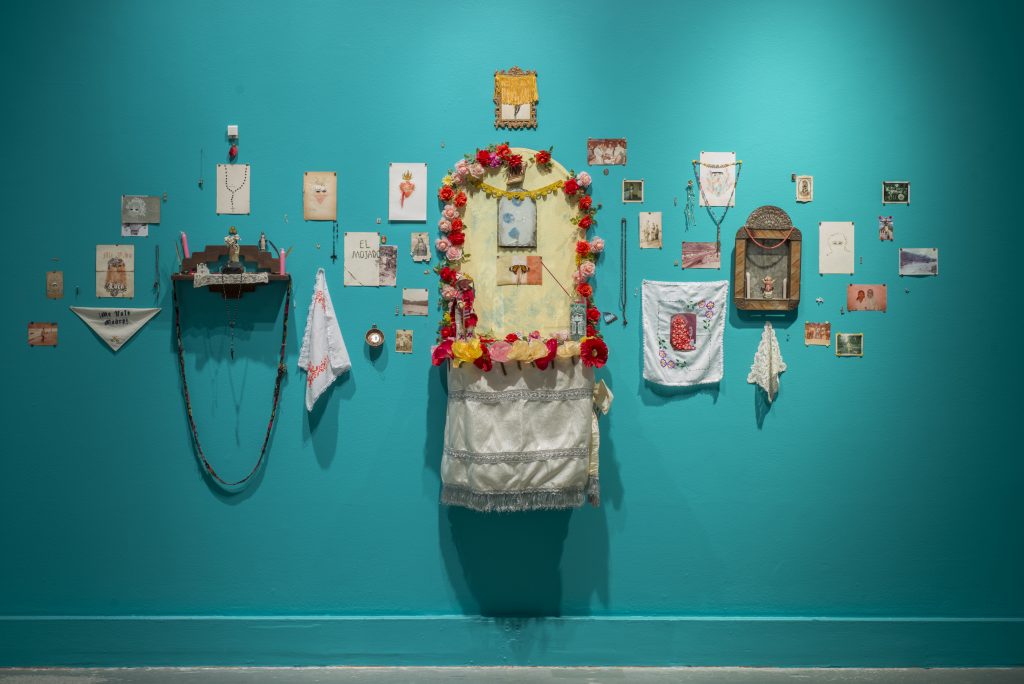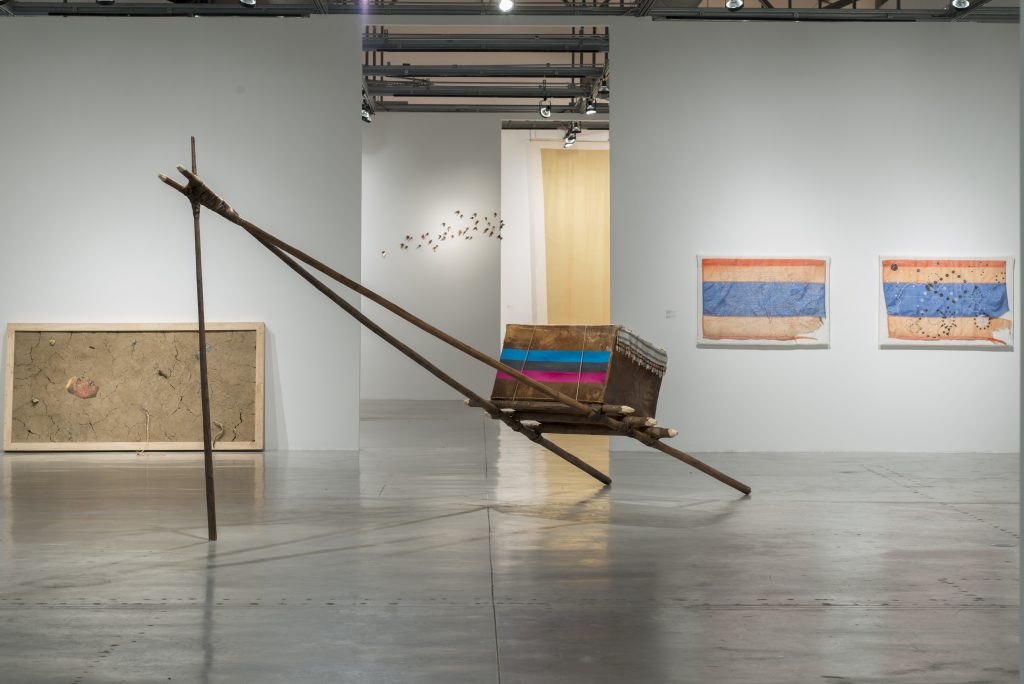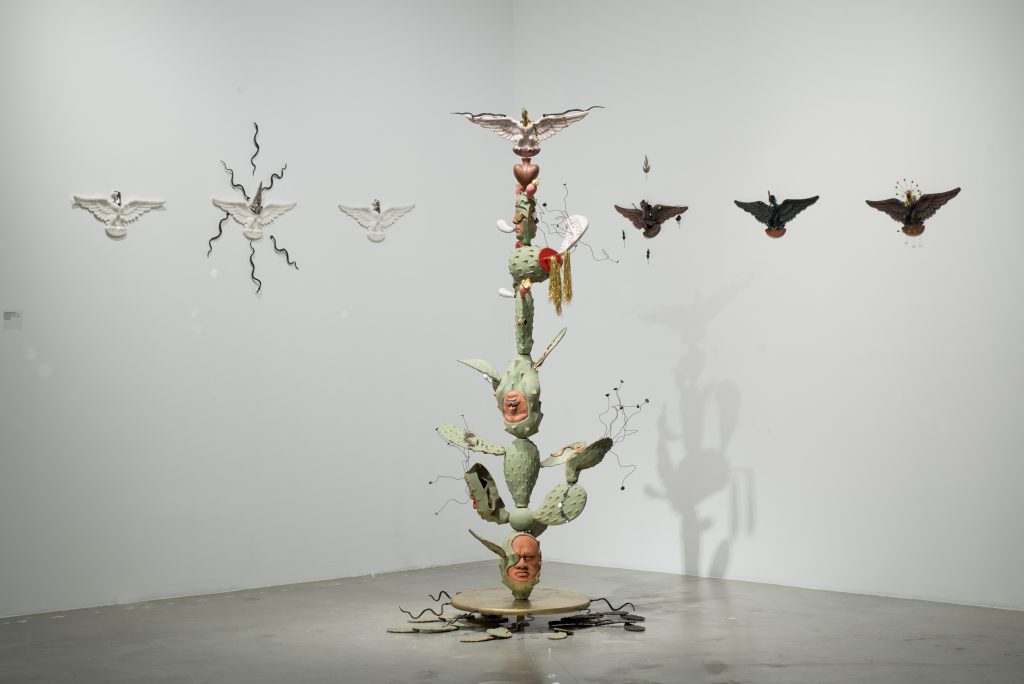
By Sandra Schulman
A group exhibition called Monarchs: Brown and Native Contemporary Artists in the Path of the Butterfly, now at The Museum of Contemporary Art North Miami (MOCA), uses the borderless migration pattern of the majestic monarch butterfly to alight on artists from Canada to Mexico.
The works of 37 artists who are native to the Americas are separated into conceptual categories including indigenous, immigrant and assimilated, but the show as whole is a gorgeous, earthy ode to all things bright and beautiful, heavy and serious.
The exhibition focuses on the monarch, the only butterfly that migrates in two directions, as a geographic range and a metaphor. Monarchs (specifically those of eastern North America) fly from southern Canada through the Midwest on their way to Michoacán, Mexico, and back, but a single insect doesn’t make the whole journey. Instead it is a series of four generations that make the journey, literally alighting on the exact same trees along the route (if they still stand) to rest, feed, and multiply. How do they do this? Pure instinct passed down from generations, deep inside the DNA.

This colorful, inspired survey of artists from or living in the path of the monarch brings to life the issues of the Dakota Access Pipeline as well as the call to build a wall on the Mexican border as unrelenting modern problems that create challenges for people native to the Americas. These artists also use inherited cultural memory to showcase and explore historical narratives of their respective heritage through abstract ideas using basket weaving, beadwork, copper hammering, quilting, and materials such as stucco, plaster, ceramics, and feathers, that hold a deeper meaning in indigenous cultures.
The beginning of the show sets the pace, with hundreds of hammered copper butterflies affixed to the walls in a fluttery stream that wraps around three walls. Artist Margarita Cabrera made these beauties with meticulous detail, mascots for the show as a whole.
Two artists – Cannupa Hanska Luger and Marty Two Bulls Jr. – collaborated on an installation in an adjoining room that brings a sobering work called Wasted, in which a row of ceramic beer and wine bottles and cigarette butts are pierced by arrows, showing a defiant decision against alcoholism and wasted lives. Maybe the path of old ways is the new way.

More important work is by Jeffrey Gibson, who is best-known for his beaded punching bags but here contributes a sculptural piece of lifesize tipi poles carrying a fur hide box festooned with crystals and beads. Movement entails physical as well as cultural baggage.
There are a set of quilts by Gina Adams embroidered with defiant messages that decry the breaking of treaties from the 1800s to today. The quilt is generally an item of comfort and warmth but the words stitched in here bristle with injustice.
Miami artist Franky Cruz has built a full-size butterfly greenhouse in the back of the exhibit where he has plants they feed on and nesting jars for caterpillars.

The very ground the museum sits on was once the site of the Tequesta tribe, but by 1845 when Florida became part of the U.S., they had effectively been dispersed, though burial mounds and the names of many Florida cities carry on their DNA.
Monarchs: Brown and Native American Artists in the Path of the Butterfly, runs through Aug. 5 at the Museum of Contemporary Art in North Miami, 770 N.E. 125th St., North Miami. Upcoming events associated with the exhibit include Butterfly Activity in NoMi Butterfly Garden at 2 p.m. Saturday, and a screening of the film The Golden Dream at 2 p.m. July 28. For more information, visti mocanomi.org or call 305-893-6211.